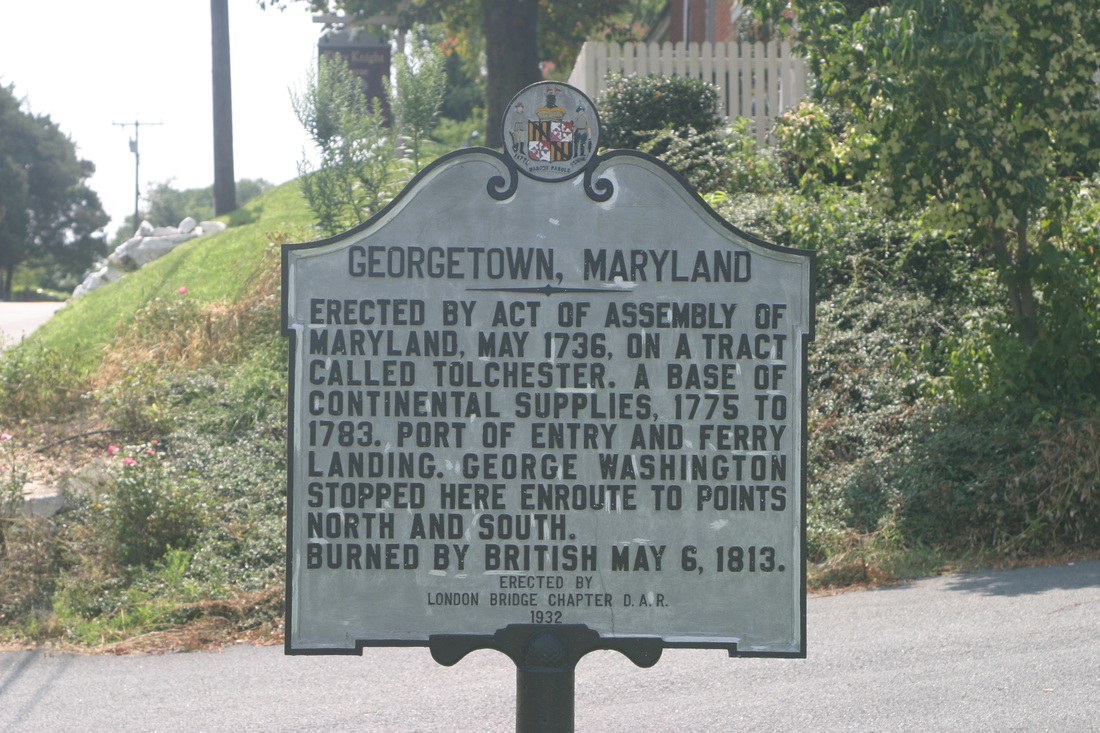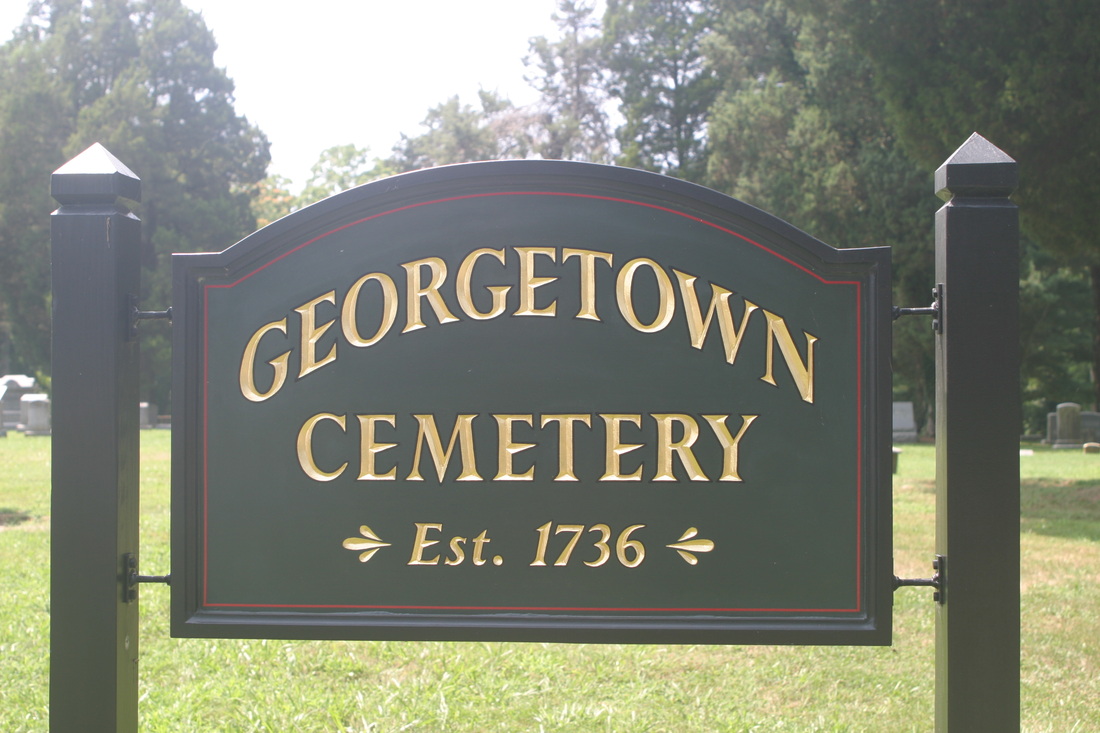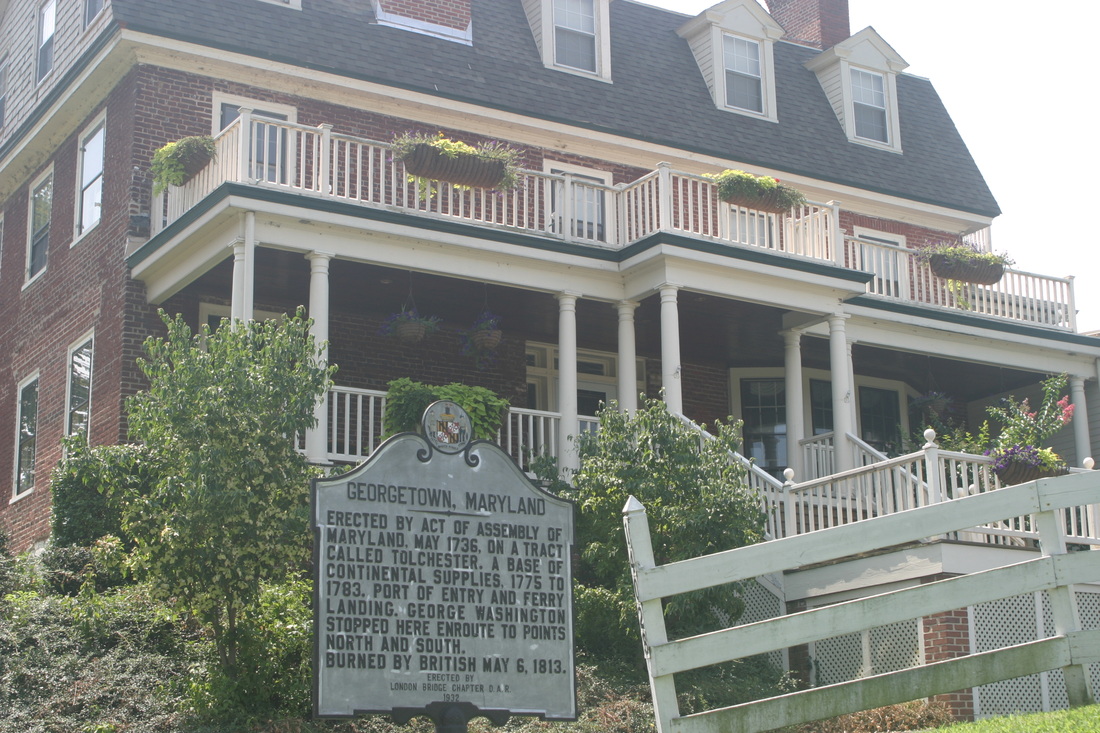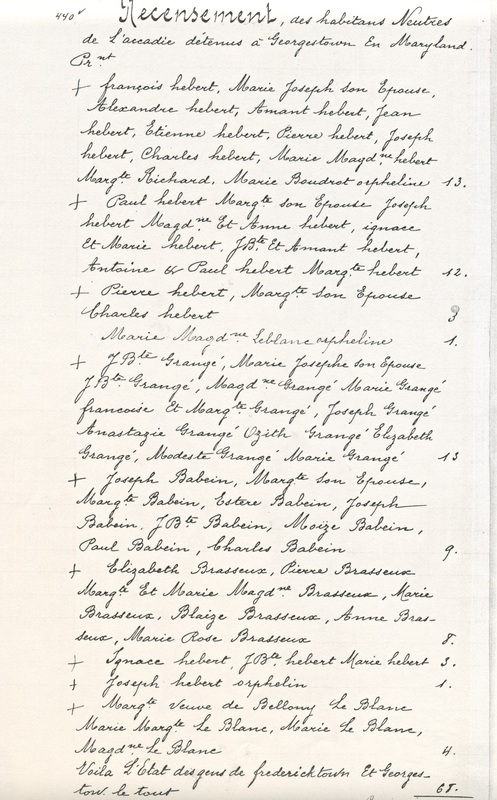View of the Sassafras River looking east from Georgetown shore - Georgetown, Kent County, Maryland
Acadians in Georgetown and Fredericktown
Located on opposite sides of the Sassafras River, the communities of Fredericktown and Georgetown once served as stopping points for travelers on the way to Philadelphia. Historian and site contributor Greg Wood notes that in 1763, 66 Acadians were living in the area and named it Frenchtown. While the two communities were largely destroyed by the British in the War of 1812, visitors to Georgetown may observe buildings, signs and landmarks that add historical context to the Acadian experience in the area.
Historian and site contributor Dr. R. Martin (Marty) Guidry observes: "There is little left in Fredericktown, Maryland except a small community. I could find nothing about the Acadians or their time period at Fredericktown. The only photo of significance that I took was this inscribed rock which is located on MD Route 213 at the Sassafrass River Bridge in Fredericktown."
Greg Wood adds, " While Father Mosley had been at Port Tobacco at one time, he was actually first sent out from Bohemia Manor, the Jesuit plantation in today's Cecil County, in the vicinity of Fredericktown/Georgetown! It can be assumed that the Acadian exiles there would have known his name, but one can only guess his influence. Meeting with Father Lewis at Bohemia Manor in 1760s, Mosley was 'sent' to Tuckahoe to minister, thereby coming into contact with the Acadians in the vicinity. Note that he was not there in the early years of exile, he was only a newcomer at the end.
"Bohemia was a Jesuit manor/plantation of 1100 acres. It had 26 slaves (3 inside, 12 in the fields, and the rest being children or aged) and one missionary circa 1759 (Georgetown University records). It is located at the head of the Bohemia River, near Warwick, MD, at the present Delaware border, only a few minutes north of Fredericktown/Georgetown on the Sassafras River. Its proximity to old Frenchtown (on the Elk River) most probably lead Moreau de St-Méry to declare in the 1790s that Acadians had named Frenchtown."
Greg Wood adds, " While Father Mosley had been at Port Tobacco at one time, he was actually first sent out from Bohemia Manor, the Jesuit plantation in today's Cecil County, in the vicinity of Fredericktown/Georgetown! It can be assumed that the Acadian exiles there would have known his name, but one can only guess his influence. Meeting with Father Lewis at Bohemia Manor in 1760s, Mosley was 'sent' to Tuckahoe to minister, thereby coming into contact with the Acadians in the vicinity. Note that he was not there in the early years of exile, he was only a newcomer at the end.
"Bohemia was a Jesuit manor/plantation of 1100 acres. It had 26 slaves (3 inside, 12 in the fields, and the rest being children or aged) and one missionary circa 1759 (Georgetown University records). It is located at the head of the Bohemia River, near Warwick, MD, at the present Delaware border, only a few minutes north of Fredericktown/Georgetown on the Sassafras River. Its proximity to old Frenchtown (on the Elk River) most probably lead Moreau de St-Méry to declare in the 1790s that Acadians had named Frenchtown."
Acadian Surnames of Fredericktown and Georgetown
- Babein (Babin)
- Boudrot
- Brasseux (Brasseaux)
- Grangé (Granger)
- Hébert
- LeBlanc
Acadians in Fredericktown and Georgetown (1763)
Published Courtesy of Library and Archives Canada
Note: To magnify the above document(s), using Chrome, right mouse click on the document and select "Open image in new tab." Or in Firefox, right mouse click on the document and select "View Image." Then use your magnifying glass to enlarge the print. In IE, use the standard "zoom" feature to enlarge your page. In Safari, right mouse click on the document and select "Open Image in New Window." Also, by clicking CTRL and then the + / - keys you may enlarge or reduce the size of any page on the site.
Note: To magnify the above document(s), using Chrome, right mouse click on the document and select "Open image in new tab." Or in Firefox, right mouse click on the document and select "View Image." Then use your magnifying glass to enlarge the print. In IE, use the standard "zoom" feature to enlarge your page. In Safari, right mouse click on the document and select "Open Image in New Window." Also, by clicking CTRL and then the + / - keys you may enlarge or reduce the size of any page on the site.






